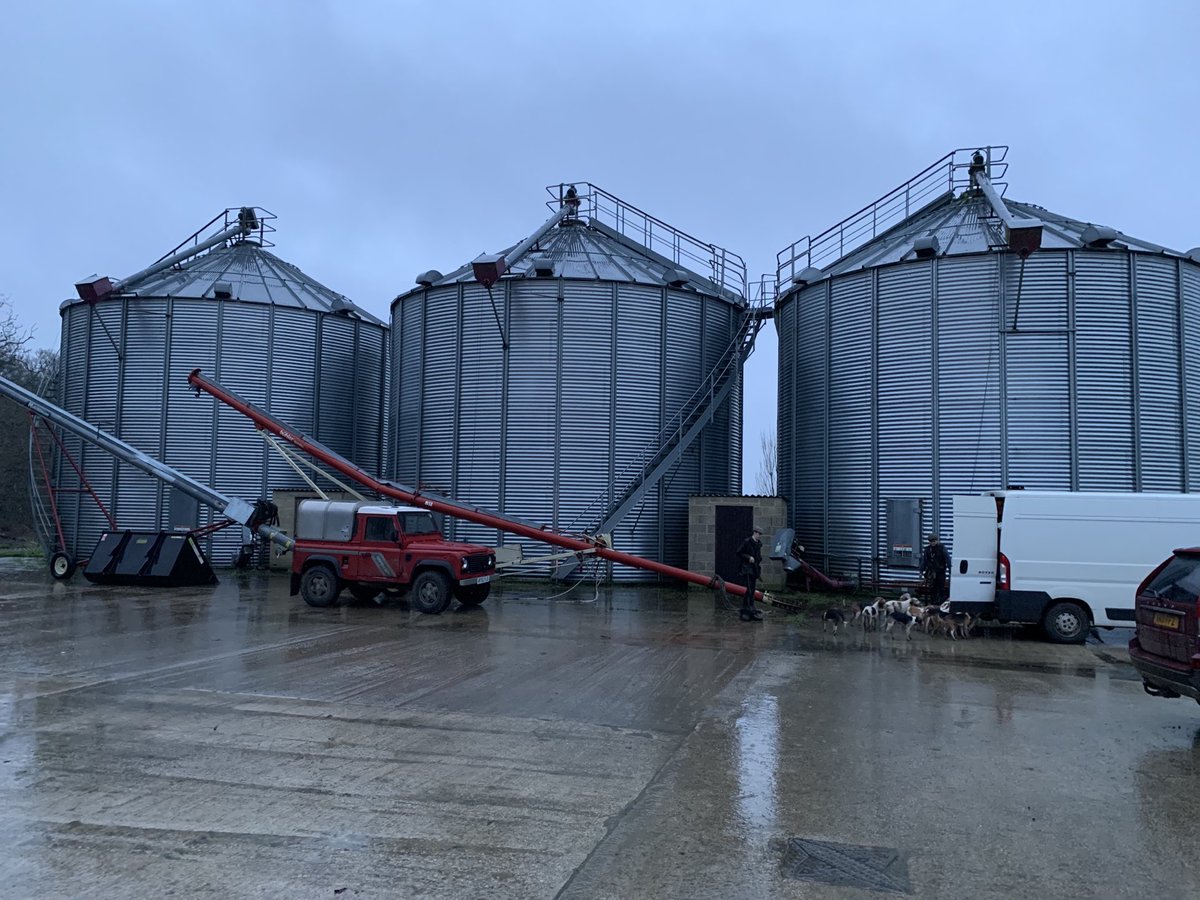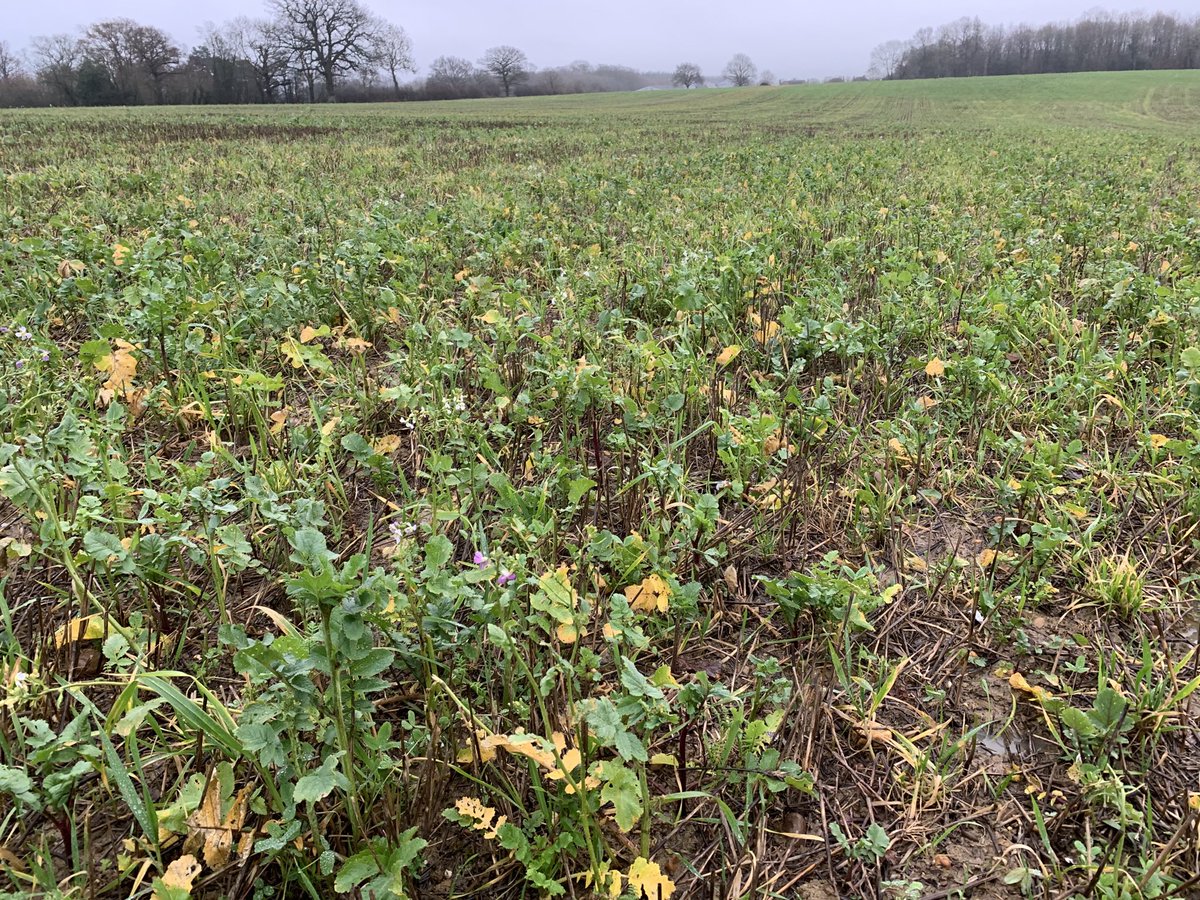There are very interesting developments going on in our countryside both where I live in Herefordshire & here in West Oxfordshire & I am more encouraged than I can remember for: farming’s future, the soils they farm & the environment. These silos are full of tonnes of grain. 1/n
2/n Today I tramped over many fields, cropped last year to fill those bins. It would take a few 100s of acres to fill them.
However this year I’d say that half the fields are stubble left from the previous crop, a quarter in winter beans and 1/4 in winter cover crops, see pic.
However this year I’d say that half the fields are stubble left from the previous crop, a quarter in winter beans and 1/4 in winter cover crops, see pic.
3/n Cover crops are great at reducing run off, slowing the flow into streams and reducing silt and fertilisers getting into our water courses and poisoning them. These are a mixture and include plants like mustard/radish or similar - in flower , Phacelia and a grass.
4/n the non grass species will have provided some late nectar & pollen for insects & likely provide a lot more in the spring. Great for our pollinators and other insects.
These crops don’t need applications of pesticides or heavy machinery allowing the soil structure to repair.
These crops don’t need applications of pesticides or heavy machinery allowing the soil structure to repair.
5/n These cover crops are likely to be temporary, perhaps followed by a spring sown commercial crop or left as a pollinator mix crop. If cut or sprayed off and then ploughed in they will add important organic matter to the soil.
6/n This is important because it will add life to the soil as fungus, worms & insects break it down. Organic matter in soil also makes it act more like a sponge slowing the flow and providing water to next crop. Many soils in continuous arable cropping are low in organic matter.

 Read on Twitter
Read on Twitter



